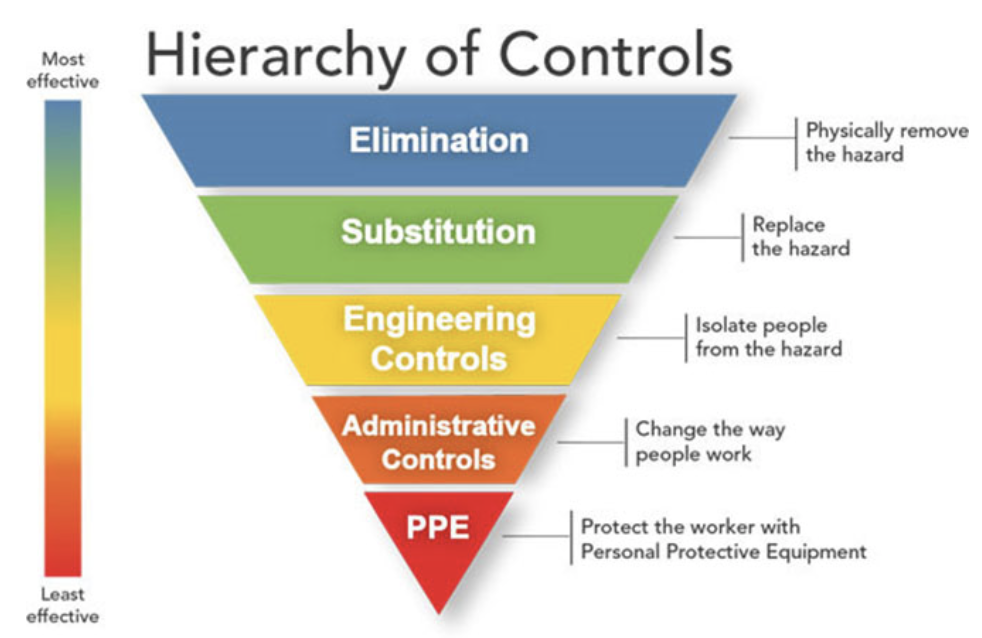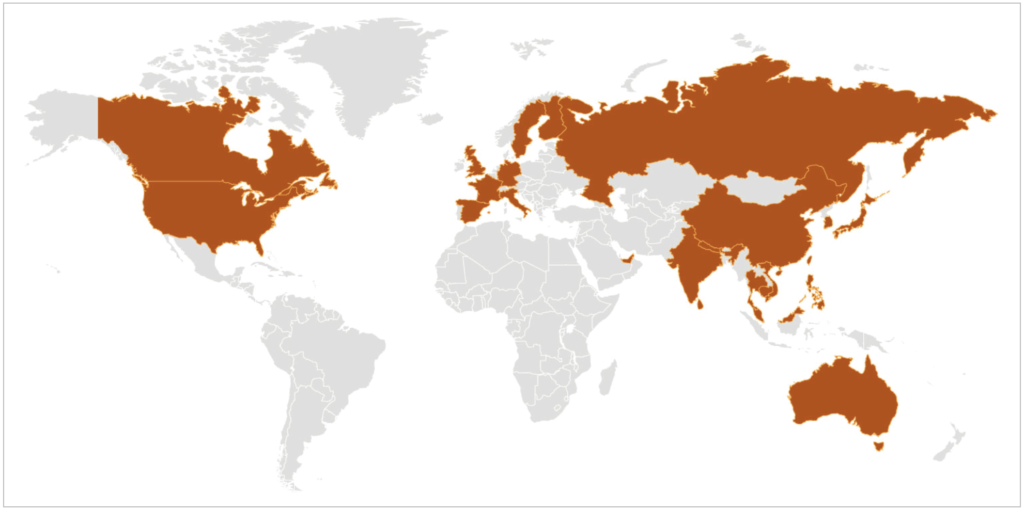If you have questions about any of these classes, or about classes available in the region, please contact our Preparedness, Exercise, and Training Coordinator, Ryanne Holland, at [email protected] or 804-723-0511 ext. 5. Thank you!
Category Archives: Blog
Strategies for PPE During COVID – 19
Healthcare systems across Central Virginia and the United States are experiencing personal protective equipment (PPE) supply chain challenges. Due to decreases in PPE exports from impacted countries and increases in demand as a result of the COVID-19 outbreak, manufacturers of select types of PPE- including N95 respirators and facemasks- are reporting increased volume of orders and challenges in meeting order demands . While plans are underway to surge PPE manufacturing globally, current impacts include delayed shipping and reduced fulfillment of PPE orders across all healthcare provider types and geographic regions.

The Central Virginia Healthcare Coalition (CVHC) is continuing to monitor and share information regarding the supply of PPE with healthcare organizations in the region. However, CVHC has no mechanism to affect the vendor prioritization, fulfillment, or distribution of PPE orders on behalf of its stakeholders. The Commonwealth of Virginia has requested release of PPE from federal stockpiles to augment supplies in primary and outpatient care settings. However, no disposition on that request is available at this time. Healthcare organizations should continue to contact their primary PPE vendor for updates on order status. For awareness, a consolidated listing of additional PPE vendors and their contact information has been attached to this message. As this situation remains fluid and dynamic, please continue to share information regarding PPE availability, needs, and shortages with CVHC by posting on the VHASS COVID-19 Event Log using your login to VHASS.
PPE Burn Rate Calculator
| This is a spreadsheet-based model that provides information for healthcare facilities to plan and optimize the use of PPE for response to coronavirus disease 2019 (COVID-19). We recommend downloading and saving the PPE burn rate calculator spreadsheet to your computer before opening the spreadsheet. Taking this step will open the spreadsheet in Excel rather than your web browser (CDC). |
| Personal Protective Equipment (PPE) Burn Rate Calculator |
Contingency and crisis strategies are based upon these assumptions:
- The facility understands its PPE inventory and supply chain.
- The facility understands their PPE utilization rate.
- The facility has been in communication with their Regional Healthcare Coalition. (If you have not requested PPE from CVHC and you are located in our region please use this form)
- Facilities have already implemented other engineering and administrative control measures including:
- Reducing the number of patients going to hospitals or outpatient settings
- Excluding non-essential HCP from entering patient care areas
- Reducing face-to-face HCP encounters with patients
- Excluding visitors to patients with confirmed or suspected COVID-19
- Cohorting patients and HCP
- Maximizing use of telemedicine
- The facilities have provided HCP with required education and training, including having them demonstrate competency with donning and doffing, with any PPE ensemble that is used to perform job responsibilities, such as patient care.
Eye Protection
Isolation Gowns
Facemasks
N95 Respirators
Reference
https://www.cdc.gov/coronavirus/2019-ncov/hcp/index.html
Emerging Disease Coronavirus
Volume 2. Issue 2 – January 28, 2020
The CDC is monitoring an outbreak of a novel coronavirus (respiratory illness) named 2019-nCoV. It was first detected in Wuhan City, Hubei Province, China and believed to have originated from a live animal market. Unfortunately, it seems to have evolved from animal-to-person spread to person-to-person. This situation is still emerging and rapidly evolving and as such links will be attached below to monitor events as they occur.
Please click on this link to see information regarding the number of people under investigation.

Global Map
As of 11:00 a.m. ET January 31, 2020
Symptoms
- Fever
- Cough
- Shortness of breath
These symptoms can range from mild to severe and can appear as little as two days or as long as fourteen days after exposure.
Criteria for Persons Under Investigation (PUI)

FAQ
VDH Surveillance Data

Checklists & Forms
Resources
Novel Coronavirus 2019, Wuhan, China. (2020, January 24). Retrieved from https://www.cdc.gov/coronavirus/2019-ncov/index.html
Virginia Department of Health. (n.d.). Retrieved from http://www.vdh.virginia.gov/surveillance-and-investigation/novel-coronavirus/
Influenza (Flu) Outbreak
Volume 2. Issue 1 – January 22, 2020
Influenza is a contagious respiratory illness caused by influenza viruses. It can range from mild to severe with serious outcomes resulting in possible hospital stays or death. Pediatrics, geriatrics, and people with compromised immune systems or certain health conditions (*diabetics, HIV/AIDS, pregnant women, asthmatics, cancer) are at high risk for serious flu complications. There are two main types of influenza: Type A and B. They are routinely spread from person to person by coughing, sneezing, or talking.
*This list is not all inclusive.
Some common signs and symptoms of the Flu can include:
- Fever
- Cough
- Sore throat
- Runny or stuffy nose
- Muscle or body aches
- Headaches
- Fatigue
Diagnosis can be confirmed by “rapid influenza diagnostic tests (RIDTs). They detect the part of the virus that stimulates an immune response. Other tests include the “rapid molecular assays” and several more accurate and sensitive tests available that are performed in specialized laboratories. The test involves a healthcare provider swiping the inside of the nose or the back of the throat with a swab.
The CDC has a weekly flu activity and surveillance page that includes surveillance data nationwide and by state. Virginia has been marked as high
Please use this link to access it: https://www.cdc.gov/flu/weekly/fluactivitysurv.htm.
The VDH also has a 2019-20 flu surveillance page specific to Virginia and can be found here: http://www.vdh.virginia.gov/epidemiology/influenza-flu-in-virginia/influenza-surveillance/
CVHC Specific
CHVC has checklists available for our different stakeholders to assist with creating a response plan for a pandemic flu response. Please feel free to download and use the plans as a guide for your particular agency.
Business Pandemic Influenza Planning Checklist
EMS Pandemic Influenza Planning Checklist
Home Healthcare Pandemic Influenza Planning Checklist
Hospital Pandemic Influenza Planning Checklist
Law Enforcement Pandemic Influenza Planning Checklist
Long Term Care Pandemic Influenza Planning Checklist
State and Local Pandemic Influenza Planning Checklist
Sources:
Influenza (Flu). (2019, December 27). Retrieved from https://www.cdc.gov/flu/index.htm.
Influenza (Flu) in Virginia. (n.d.). Retrieved December 30, 2019, from http://www.vdh.virginia.gov/epidemiology/influenza-flu-in-virginia/.
Hurricane Preparedness – Before, During, and After
Volume 1. Issue 6. – August 30, 2019
Hurricanes are large storm systems formed over warm oceans and track toward land. These systems can cause powerful winds, heavy rainfall, storm surges, flooding, increased rip currents, and the formation of tornadoes (often multiple). Secondary effects of these storms will result in power outages, downed trees and erosions or landslides.
Hurricane season runs from June 1 to November 30 for the East Coast (Atlantic) of the United States and May 15 to November 30 for the West Coast (Pacific). Hurricanes can span across >100 miles inland and are most active in September.
Prepare NOW before a hurricane, Survive during and, Stay Safe after a Hurricane!
Before a Hurricane: PREPARE
- Know your area’s risk of hurricanes.
- Become familiar with your evacuation zone, the evacuation route, and shelter locations.
- VDEM’s KNOW YOUR ZONE (click for link)
- Sign up for your community’s warning system.
- Become familiar with your evacuation zone, the evacuation route, and shelter locations.
- Stay alert to updates and warning
- Gather supplies, medicines, food for all persons and pets, to last 3 days
- Need help knowing what to put in your preparedness kit? : EmergencySuppliesKit
- Locate a safe shelter – interior room without windows on the lowest level not prone to flooding
- Practice going to the shelter / safe space for high winds
- Make a communications plan with family members
- Plan what time you will all check in and via what method (ex: text or call)
- Keep phone numbers written down in your preparedness bag incase of cellular power/use loss
- Prepare for prolonged power outages
- Fuel up your vehicles and generators
- Charge cellular phones and flashlights or medical devices
- Turn your refrigerator or freezer to the coldest setting and open only when necessary.
- Keep a thermometer in the refrigerator
- Keep important documents in a safe place or create password-protected digital copies.
- Prepare your home.
- Declutter drains and gutters.
- Install valves in plumbing to prevent backups.
- Review insurance policies.
- Bring loose yard debris, decorations, and tools inside. These items can become projectiles in high winds. Do not bring in gasoline or propane tanks.
- If you are in an immediate impact zone: Cover your home windows with permanent shutters or wood boards
During a Hurricane: SURVIVE
- Evacuate or Shelter in Place
- Protect yourself from high winds and flying debris by taking refuge in an interior room of your house/building without windows.
- Evacuate if you are advised to do so.
- If trapped in a building by flooding, go to the highest level of the building. Do not climb into a closed attic. You may become trapped by rising flood water.
- Be aware of emergency alerts and alarms
- Never use a generator indoors or near windows
- “Turn Around, Don’t Drown” – never drive/walk/swim through flood waters of an unknown level
- Stay off bridges over fast-moving water
After a Hurricane: STAY SAFE
- Listen to authorities for information and special instructions.
- Be careful during clean-up.
- Wear protective clothing and work with someone else.
- Do not touch electrical equipment if it is wet or if you are standing in water. If it is safe to do so, turn off electricity at the main breaker or fuse box to prevent electric shock.
- Avoid wading in flood water, which can contain dangerous debris. Underground or downed power lines can also electrically charge the water.
- Save phone calls for emergencies. Phone systems are often down or busy after a disaster. Use text messages or social media to communicate with family and friends.
- Stay alert for Storm Surge!
- Storm Surge is the leading cause of hurricane-related deaths in the USA (ready.gov).
- A storm surge occurs when water from the ocean is pushed toward the shore and lands by the forceful winds of the hurricane.
- Storm Surge occurs rapidly causing extreme flooding even many miles inland causing destruction of property and life.
- Storm surge can cause the undermining of highways/bridges/roads and foundations
- Assess the effects of persons and property
- Persons – seek medical care and relocation if necessary
- Property – assess and document for damage
- One inch of water in your home can cause approximately $25,000 of damage.
- Flood damage is not typically covered in basic homeowners or renter’s insurance
- Document any property damage with photographs. Contact your insurance company for assistance.
Sources:
Department of Homeland Security. Ready.gov: Hurricanes. Retrieved from https://www.ready.gov/hurricanes
Skywarn, Owlie. National Weather Service. Emergency Supplies Kit. Retrieved from https://www.weather.gov/owlie/emergencysupplieskit
Virginia Department of Emergency Management. Know Your Zone. Retrieved from https://www.vaemergency.gov/hurricane-evacuation-zone-lookup/
